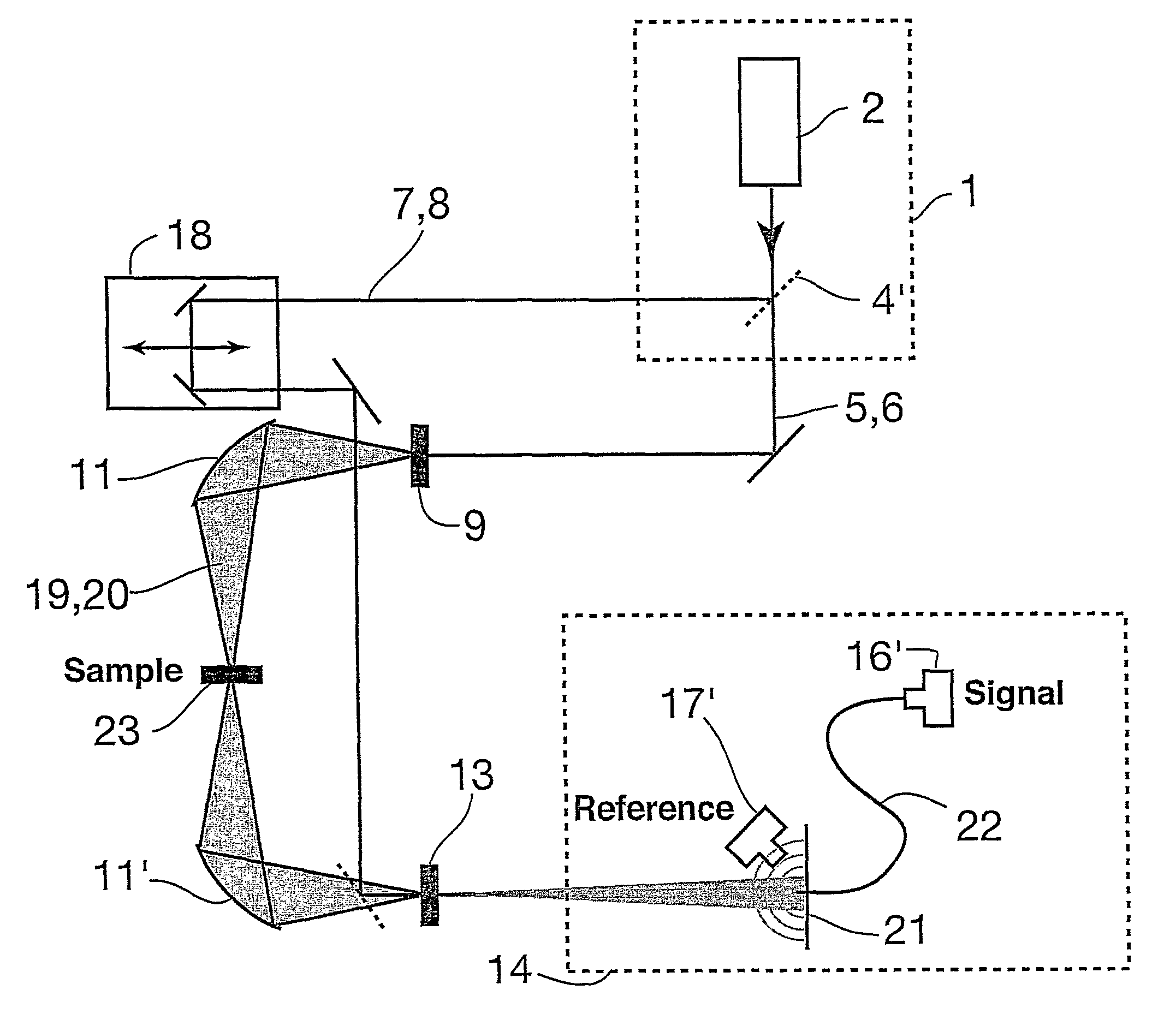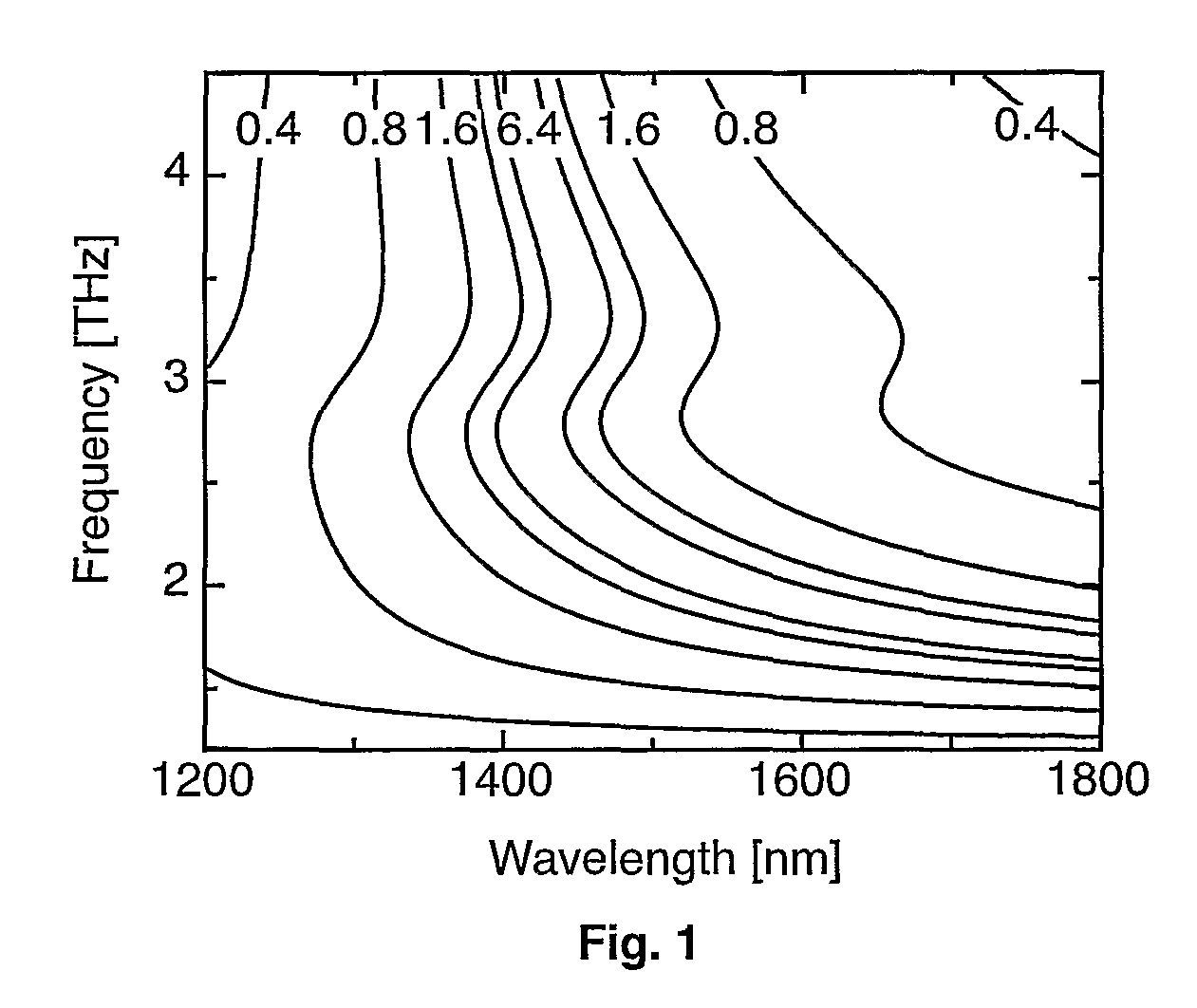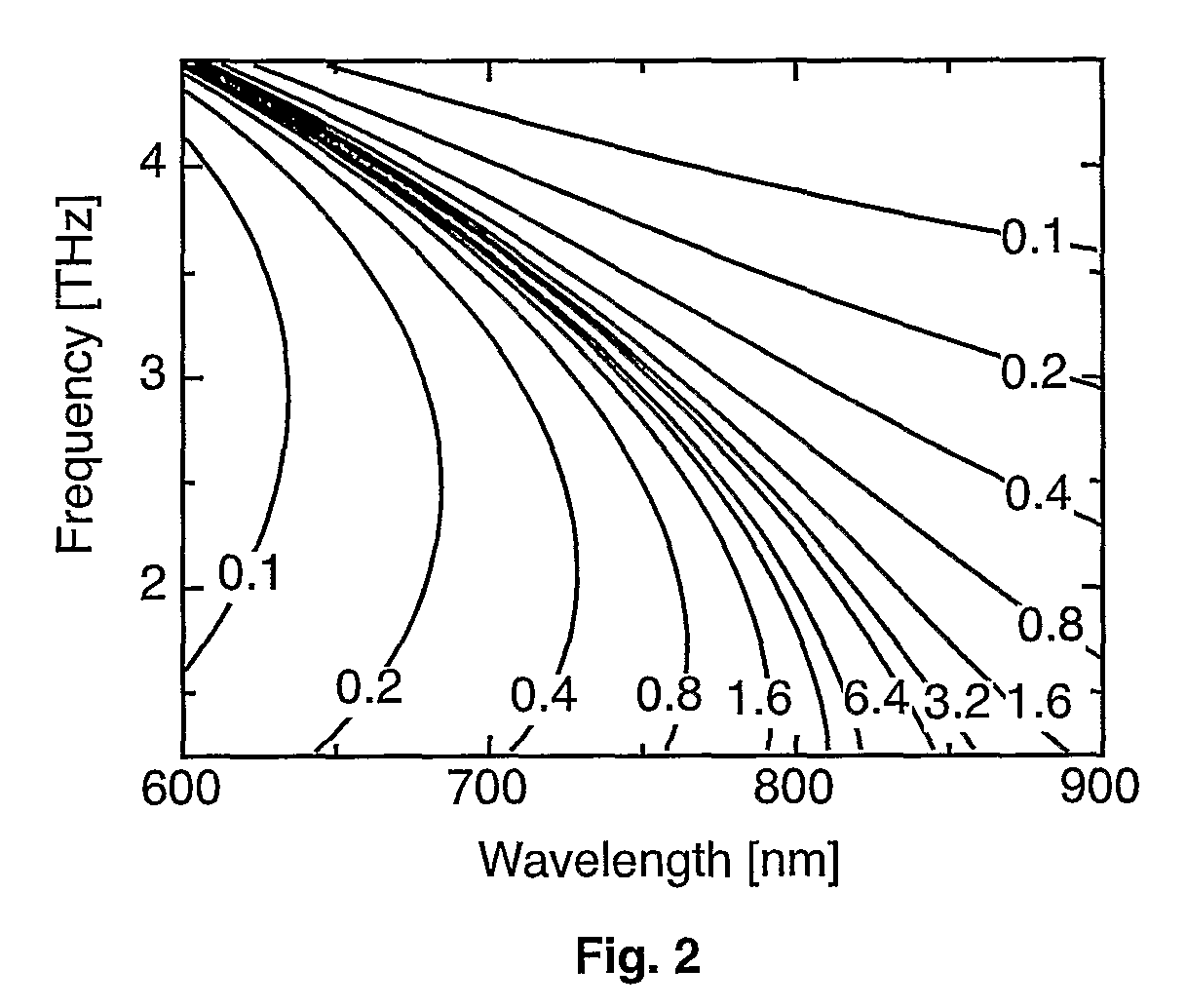Broadband Terahertz radiation generation and detection system and method
a terahertz radiation and detection system technology, applied in the direction of optical radiation measurement, instruments, spectrophotometry/monochromators, etc., can solve the problems of high optical power risk, complex system, high cost, etc., and achieve the effect of reducing complexity
- Summary
- Abstract
- Description
- Claims
- Application Information
AI Technical Summary
Benefits of technology
Problems solved by technology
Method used
Image
Examples
Embodiment Construction
[0059]Introduction
[0060]The velocity-matched generation and detection of THz pulses with 1.5 μm laser pulses in the organic nonlinear crystal DAST (4-N,N-dimethylamino-4′-N′-methyl stilbazolium tosylate) with an EO coefficient (r111=47 pm / V at λ=1535 nm [7]) that is more than an order of magnitude higher than that of ZnTe or GaAs is demonstrated theoretically and experimentally. A THz-induced modulation of up to 140% using a nominally linear technique is achieved (see section 4.1). Additionally, it is shown that DAST and ZnTe can be combined in a single THz system if one of the optical beams is frequency-doubled, which allows more versatile detection schemes.
[0061]Optimal wavelength range for generation / detection of THz pulses Optical rectification is a second-order nonlinear optical process, where two optical waves with angular frequency ω interact with each other in a noncentrosymmetric crystal to generate a dc polarisation POR through the nonlinear susceptibility X(2)(Ω=0; ω,−ω)....
PUM
| Property | Measurement | Unit |
|---|---|---|
| central wavelength | aaaaa | aaaaa |
| central wavelength | aaaaa | aaaaa |
| first wavelength | aaaaa | aaaaa |
Abstract
Description
Claims
Application Information
 Login to View More
Login to View More - R&D
- Intellectual Property
- Life Sciences
- Materials
- Tech Scout
- Unparalleled Data Quality
- Higher Quality Content
- 60% Fewer Hallucinations
Browse by: Latest US Patents, China's latest patents, Technical Efficacy Thesaurus, Application Domain, Technology Topic, Popular Technical Reports.
© 2025 PatSnap. All rights reserved.Legal|Privacy policy|Modern Slavery Act Transparency Statement|Sitemap|About US| Contact US: help@patsnap.com



